BlueMicrophones
Latest

Blue's latest microphone gives streamers an XLR option
With the rise of livestreaming, easy-to-use audio gear has become a staple among YouTubers, podcasters and more. Blue has been catering to that group for a while now with its line of plug-and-play USB microphones, but at CES 2019 the company has a new XLR option aimed at streamers and professional recording environments. The Blue Ember is a $100 mic that's designed to cut down on background noise thanks to its "tight pickup pattern." Basically, the cardioid pattern of the microphone focuses on what's right in front of it to minimize any room noise.

Blue wins engineering Emmy for its Mix-Fi headphones
Blue is probably best known for its line of microphones, but the company's headphones managed to take home an Emmy. The Blue Mix-Fi headphones won Outstanding Achievement in Engineering Development, becoming the first headphones ever to win the award.
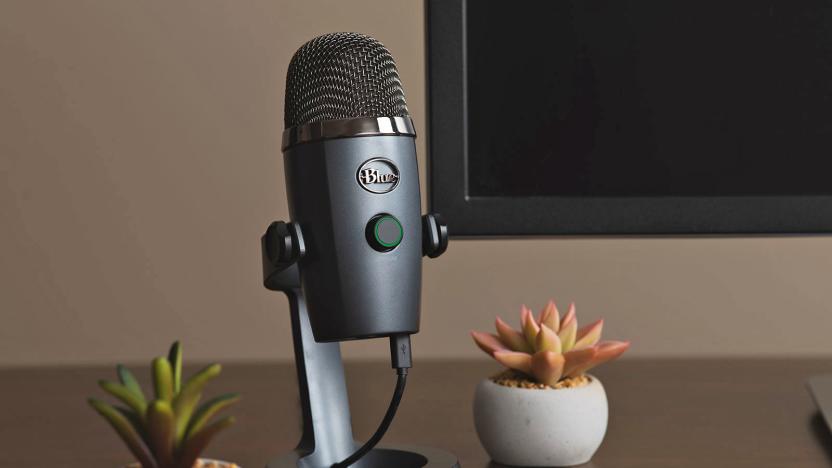
Blue's Yeti Nano is built for simple, high-quality desktop recording
When it comes to podcasting and livestreaming, USB microphones are a great option due to their plug-and-play design. And perhaps no name is more synonymous with these recording devices than Blue Microphones. The company that's best known for it's popular Yeti and Snowball modes (in addition to a line of pro-level studio mics) is introducing its first new product since it was purchased by Logitech for $117 million last month. Meet the Yeti Nano.
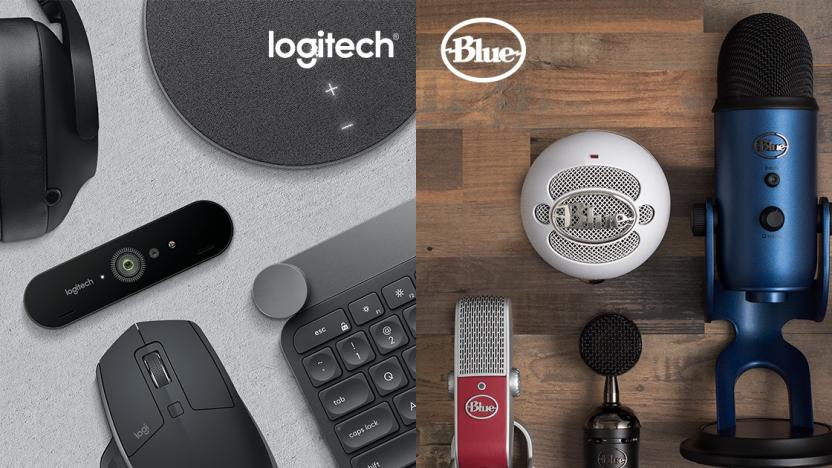
Blue Microphones sells to Logitech for $117 million
As the market for equipment needed by podcasters, streamers and other content creators grows, Blue Microphones has become a trusted and well-known name. Now Logitech has stepped in to acquire the company for about $117 million in cash. Both companies make headsets, but adding the microphones to Logitech's set of cameras is a natural fit. Said Blue CEO John Maier: "So here's the deal: all of us here at Blue will keep creating cool stuff for professional musicians, gamers, podcasters, YouTubers, and streamers; Logitech will help us conquer the world. It's a great partnership full of possibilities." As usual, the promises are that everything will be good, better and best, but we will have to wait and see if all of the products involved continue to maintain the quality customers (and listeners/viewers) have come to expect.
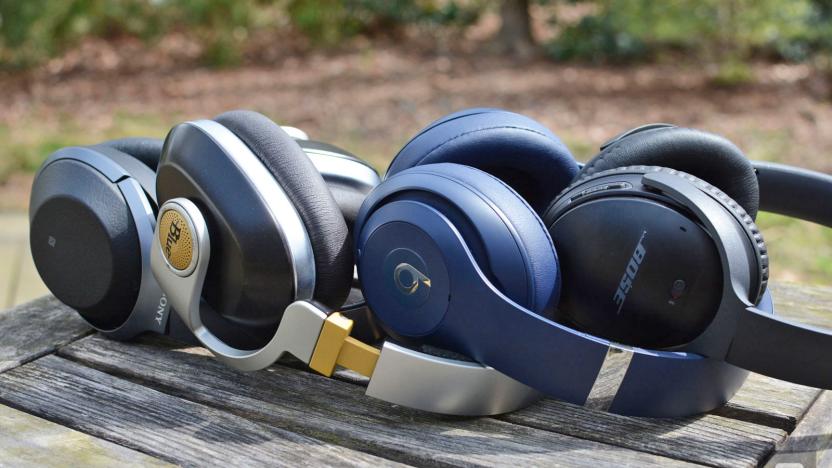
The best wireless headphones
Music is a necessity while I'm working. If it's not tunes from Spotify, there's at least a podcast chattering on in my ear. Of course, if you don't want to bother those around you with what you're listening to, you need a good set of headphones. The best options will also do a good job of blocking out the outside world. We've already offered some suggestions on the best wireless earbuds, so now it's time to examine the best over-ear wireless headphones. Each was selected for its mix of comfort, sound quality and effective noise cancellation. Because let's be honest: Audio is just one part of the equation when it comes to long listening sessions.
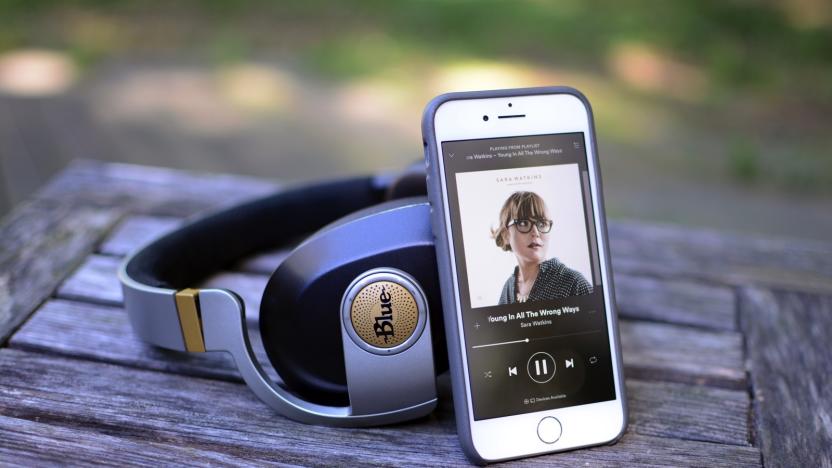
Blue raises the bar for wireless audio with its Satellite headphones
After making its name building microphones for both amateurs and professionals, Blue made the leap to headphones back in 2014. Its first model, the Mo-Fi, featured a built-in amplifier and the company followed up with three others, including a planar magnetic set that also has an onboard amp. All of those options were wired, though, and if we've learned anything about "courageous" smartphone makers these days, the headphone jack is on its way out. To cater to the wireless craze, Blue announced its first wireless headphones, the Satellite, at CES in January. While this $400 model features and amp for top-notch audio, the Satellite lacks a key selling point for headphones: comfort.

Blue's wireless Satellite headphones pack a built-in amp for $400
Blue announced its first wireless headphones back at CES, but now you can finally get your hands on a pair. The company's latest model, Satellite, has Bluetooth 4.1 and Apt-X to keep the wireless streaming from your go-to device going strong. To further enhance the high-quality audio, there's a built-in headphone amp. Similar to some of Blue's existing headphone models, you can turn that feature off to save battery or at times to you may not need it -- like when you're listening to podcasts.
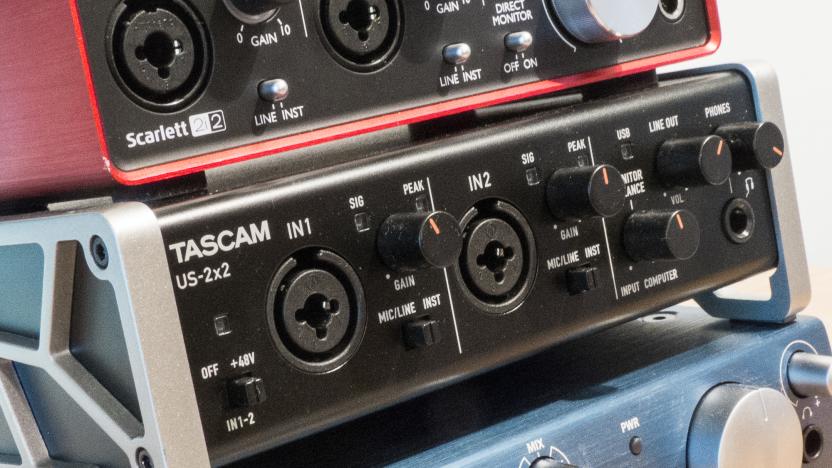
The best USB audio interface
By Al Griffin This post was done in partnership with The Wirecutter, a buyer's guide to the best technology. When readers choose to buy The Wirecutter's independently chosen editorial picks, it may earn affiliate commissions that support its work. Read the full article here. For beginners looking to branch out into DIY recording, we recommend the Tascam US-2×2. After spending 30 hours researching the category, discussing key features with audio pros, and recording instrument and vocal samples on five models for evaluation by a panel of trained listeners, we chose the US-2×2 as our favorite. We found it to be the easiest model to work with, and setup in most cases is plug and play. It's also one of the more affordable two-channel USB audio interfaces on the market.

How Blue used its microphone know-how to design headphones
Blue's USB microphones have been a podcasting staple since the Snowball was introduced in the mid 2000s. Before then, the company had years of experience crafting professional-grade studio mics that became the go-to options for producers and engineers. It's a reputation that Blue maintains to this day. In 2014, the company decided to tackle headphones with Mo-Fi -- a wired model with a unique hinged design and a built-in audiophile-grade amplifier. Then, at CES this week, Blue took the wraps off three new models: the planar magnetic Ella; Mo-Fi's successor, Sadie; and the wireless Satellite. Soon after, I sat down with CEO John Maier to find out how the company put its microphone expertise to use in a range of headphones.

Blue's pricey planar magnetic headphones feature a built-in amp
Blue may be a company known more for its studio-grade and USB microphones, but in 2017 it's taking a deeper dive into headphones. After the 2014 introduction of Mo-Fi, a set of headphones with a built-in amplifier, the company released Lola last year. Although that second set didn't feature an amp, it did still offer Blue's rather unique hinged design cut out the added heft. At CES today, the company already took the wraps off of the wireless Satellite headphones and it also has two other models that are set to ship early this year.

Blue's first wireless headphones nix the cord, keep the built-in amp
Blue is a name most people associate with USB microphones for podcasting and desktop recording. But the brand has a stellar reputation for studio mics as well. Back in 2014, the company released its first set of headphones, Mo-Fi, which featured a built-in amp to drive high-quality sound. At a time when headphone jacks are becoming scarce, wired headphones are an increasingly tough sell. Against that backdrop, Blue has a wireless option it's debuting off at CES -- and it still features an amplifier to preserve top-notch audio quality even after nixing the cable.

Blue's new microphone is a compact option for recording on the go
Blue Microphones' gear has been the go-to choice for novice podcasters and audio pros for years and now the company has yet another option for mobile recording. The new device is called the Raspberry: an iOS and USB microphone that offers plug-and-play audio tracking without the headaches of a lengthy setup process. The ease with which you can be up and running has become a key feature for Blue's gear so it's nice to see that continue with this new offering.

Blue's Lola headphones nix features in favor of comfort
When it comes to headphones, comfort is at the top of my list of demands. It even edges out sound quality. Blue's Mo-Fi headphones were announced last year, and while they offered great sound, a built-in amp added an uncomfortable amount of bulk. Thankfully, the company announced a lighter version, the Lola, just before the end of the year. These new headphones weigh less, but that's because they don't have that on-board headphone amplifier. The new model is $100 cheaper, but is it still worth the investment without the fancy tech?

Blue's Lola headphones slim down for a more comfortable fit
Blue, a company known primarily for its microphones, announced its Mo-Fi headphones last year. They sound great, but the cans are quite hefty. Mo-Fi houses a built-in amp to handle the high-quality audio, so the extra weight is necessary, albeit somewhat uncomfortable during extended listening sessions. Now, the company has a comfier headphone option with Lola. These new headphones leave out the amp, which cuts out the extra weight, and feature a slimmer headband. Without the bulk of the Mo-Fi, Blue says Lola brings the high-fidelity sound in a package that's more cozy.
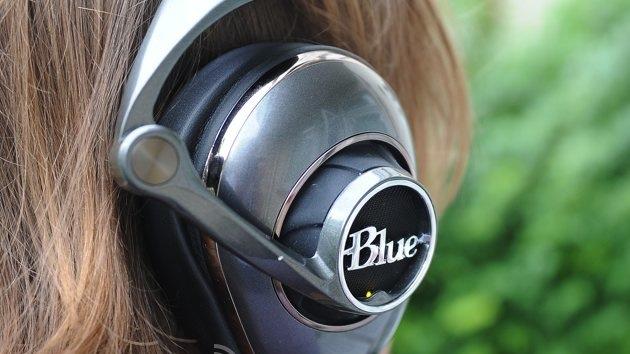
Blue's first headphones have a built-in amp for better mobile audio
Blue Microphones, as the company's name suggests, specializes in recording equipment, from professional studio mics to desktop models to mobile accessories. Today, Blue is breaking into a brand new product category, though not really out of its comfort zone, with the launch of the Mo-Fi headphones. It's a move you may have been expecting, given Blue announced its intentions at the beginning of the year, and has continued to tease this first foray into listening gear ever since. Put simply, the idea is to bring the kind of high-fidelity audio you'd get from a home sound system to other, more portable devices (as long as you're willing to pay for it). Blue's Mo-Fi cans are available in the US today for $350, and will be coming to the UK "soon" for £275.

Blue Microphones looks to tackle headphone hi-fi audio woes with Mo-Fi
Blue Microphones have long been the choice of podcasters and recording pros for capturing audio both in-studio and on the go. Now, the audio outfit is looking to tackle hi-fi mobile listening with an effort it's calling Mo-Fi. The company says that "true mobile high fidelity" is what Mo-Fi brings to the table with a line of products coming in spring 2014. "The market is plenty crowded with lo-fi headphones for our mobile devices. But classic hi-fi headphones are too power-hungry for our mobile devices. We are ready for the next innovation in headphones and the market is ready now too," said John Maier, CEO of Blue. Unfortunately, that's about all the detail Blue is spilling at this point, so we'll have to wait to hear more on the gadgets and the hi-fi... er, Mo-Fi tech that'll power 'em. There's a teaser video after the break that flaunts what a appears to be a set of headphones, but that's the only tidbit we have to go on right now. You can, however, click over to the source link below for product previews as they arrive.

Blue Nessie: Excellent mic for entry-level podcasters and beyond
If I say "Nessie" your first thought is somewhere in Scotland, right? Well the folks over at Blue are changing your definition of that word forever with their latest microphone. For US$99 you can now record all sorts of things armed with a Mac that has a USB port (sorry Beige G3!)) and it will all sound pretty fantastic. Design This is a mic that doesn't take up a lot of space, something that's particularly painful to Blue Snowball users. No more wide tripod base, this is a single solid disc on your desk, and included in the base is both a volume dial for your headphones, and an indicator light that lets you know the mic is connected and powered up (solid white), or muted (pulsing white). Just above where the mic "neck" meets the base is where you plug in your monitor headphones (it's a 3mm audio jack, just above the red switch in the photo). I have been using my EarPods in this setup and they sound just fine. I'm not recording music or anything too complex, so the EarPods do a fine job. I've also used my previous iteration of Apple earphones successfully, so if you have comfy monitor headphones, you're all set. Functionality This is a cardioid microphone, so it's good for lessening sound that isn't what you want to pick up. It has a built-in pop filter and built-in shock mount, so two common issues of recording are resolved without additional equipment. You can choose from three preset modes when recording: Vocal, Instruments and a "raw" setting for those who wish to tweak and rejigger audio later on. When you take the Nessie and the cable out of the packaging, you're ready to go; there are no drivers or "management software" to install. And once it's unpackaged, you can tip Nessie's head in all sorts of directions, which is handy if you are looking to use those other modes and record more than just podcasts. Also inside the aforementioned base is an internal shock mount, which teams up with the pop filter to help keep even more incidental noise out of the recording. Conclusion If you need a microphone that works in a variety of settings that all involve a horizontal surface to set the mic on, Nessie has excellent sound quality at a very good price. This is a very good mic for someone who might be interested in recording with more than an iPhone, but maybe isn't ready to drop "pro audio" amounts of money. Pros Great sound quality Excellent base design (including volume and shock mount) Modes available for different use types Easy to find and use mute button Cons Requires a stable horizontal surface (not the best for field recording or saving desk space) Who is it for? This is for someone who might be using a USB headset or an iPhone mic and wants to up their audio game with a separate "point and shoot" microphone that can take care of some basic settings, or just record raw audio for more advanced folks.

Test-driving the Blue Microphone Spark Digital
Many podcasters and musicians love the digital and analog microphones made by Blue Microphone. The company's booth at trade shows usually has a long line of computer geeks eager to see what the latest mic is, and earlier this year we were wowed by both the Spark Digital (US$199.95) and the just-released Nessie ($99.95). Now that the initial crush of orders for the Spark Digital has subsided somewhat, I was able to get a review device for a test drive and found a lot to like in this compact microphone for Mac and iPad. Design When I say it's a compact microphone, I'm saying that the Spark Digital isn't as massive as the Blue Yeti that I currently use. It comes with a small adjustable tilt stand that not only has some vibration-isolating padding on the bottom of it, but also includes a separate shock mount that suspends the microphone body from a series of elastic cords. The body of the mic is dark metallic blue with light metallic blue highlights at top and bottom. On the front is a chrome-plated Blue logo, and a mute/gain/volume knob. There is an LED in the knob, as well as a set of four tiny LEDs that glow orange to denote gain level or blue for output level. On the back is a switch for Focus Control -- more about that later. The top of the mic contains the action -- in the words of Blue Mics, it's the "same studio-grade condenser capsule and hand-tuned components for high-fidelity recording and consistence performance in any situation– vocals, drums, piano, speech, location recording and more." The capsule is in a see-through metal cage that acts as a bit of a pop filter, although professionals will want to invest in a separate pop filter to keep those plosives from wrecking their recordings. %Gallery-191500% With the Spark Digital, Blue Mics includes two cables. One is used to connect the microphone to a USB port on a Mac or PC, and includes a separate headphone jack for monitoring what you're recording. The other cable also has that separate headphone jack, but ends in a 30-pin connector for use with an iPad. If you wish to connect it to a fourth-generation iPad or iPad mini, you'll have to invest in a separate Apple 30-pin Dock connector to Lightning adapter. To carry all this on the road with you, there's a nice microfiber-lined carrying bag with the Spark Digital logo on the side. There's a separate pocket for the cables, with the mic being carried in the main pocket of the bag. Functionality Mac According to Blue Microphones, the Spark Digital was designed from the start to provide a rich and vibrant sound, perfect for podcasters and singers but also appropriate for many musical instruments. I'll get to the meat of the review right now -- the sound quality of the Spark Digital absolutely blew me away, and that's coming from someone who has used a Blue Mics Yeti for years. Listen to the following Garage Band recording on the Mac in which I first record a sentence with the Yeti, then the same sentence with the Spark Digital without Focus Control enabled, and finally with Focus Control enabled. Sound is quite subjective, but for me the Spark Digital recordings sound much more realistic than the one from the Yeti. There's much less background noise in the Spark Digital recordings, and the Yeti seems to be emphasizing the lower tones in my voice, making it boom a bit more. The Yeti sounds a bit more "mechanical" to my ears. Note that the Yeti was set up with a similar cardiod pickup pattern to what is normal for the Spark Digital. There's less of a difference between the Spark Digital recordings with Focus Control disabled and enabled. However, after listening repeatedly to the two recordings, the one made with Focus Control enabled seems to me to be the most accurate representation of what my voice actually sounds like. It's just a hint "warmer" than the recording made without Focus Control on. Monitoring with a set of headphones worked well; just changing the output settings to "Blue Microphones Spark Digital" allows monitoring of everything that's being picked up by the mic. iPad The Yeti can't be used with an iPad, so I was unable to do a similar comparison between the two Blue Mics. Instead, I did a comparison between the built-in microphone of the iPad and the Spark Digital. Unsurprisingly, the Spark Digital did a wonderful job. Llsten to the recording below to hear the built-in microphone first, followed by the Spark Digital. Unless you love background noise and hisses, you'll agree that the Spark Digital recording is hands-down superior (this was done with Focus Control turned on). I apologize for cutting off the beginning of the second recording. Once again, monitoring worked perfectly through the headphones; I could even hear the "countdown" cue to the start of the recording. For the first time, I could actually imagine recording a podcast or music (if I had any musical talent other than singing) on the iPad. It's almost hard to believe that both recordings were made in the same location on the same iPad -- the Spark Digital did an excellent job of ignoring the background noises that the iPad's built-in mic seemed to exaggerate. Conclusion With the Spark Digital, Blue Microphones has created what is probably the best microphone for recording both on iPad and Mac or PC. The unique design and superb electronics combine to make a microphone that excels in capturing voices in a most realistic way and would most likely be (I was unable to test) excellent for musical recordings as well. For podcasters who want to get the most out of their computer or iPad, there's currently no equal to the Spark Digital.

Blue Microphones' Nessie now available, promises enhanced sound in real time
Blue Microphones' Nessie is now out on the market, months after we took it for a spin at this year's CES. Named after a cryptid like its older sibling the Yeti, Nessie comes with three modes -- one for raw audio, another optimized for richer vocals and one that enhances instrumental music. The company claims the USB microphone delivers studio-enhanced sound in real-time, and you don't need to go through manual post-production unless you chose to record in raw audio. Made to work directly with both PCs and Macs, you can also use Nessie with iPads using a 30-pin to USB or a Lightning to USB adapter. Available now for $99 at Apple's retail and online stores, Nessie will also surface on Best Buy, Guitar Center, and other Blue retailers at a later date. Before you whip out those credit cards, though, check out the sound samples and comparisons recorded using the device after the break.

April Fools' Day roundup: hamster beats, pirate's booty and Play-Doh printing
April Fools' Day is tough. Believe us. We know. It's 24 hours of fake news, bad jokes and Gangnam Style references. But not all of it is the internet equivalent to lining a toilet with plastic wrap. Sometimes, good stuff manages to slip through the proverbial cracks in the web. After the break, check out some of the holiday's highlights. If you dare.







